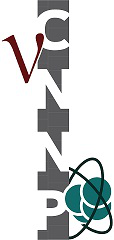Speaker
Description
The knowledge of initial flux, energy and flavor of current neutrino beams is currently the main limitation for a precise measurement of neutrino cross sections. The ENUBET ERC project (2016-2021) is studying a facility based on a narrow band neutrino beam capable of constraining the neutrino fluxes normalization through the monitoring of the associated charged leptons in an instrumented decay tunnel. Since March 2019, ENUBET is also a CERN Neutrino Platform project (NP06/ENUBET) developed in collaboration with CERN A&T and CERN-EN. In ENUBET, the identification of large-angle positrons from $K_{e3}$ decays at single particle level can potentially reduce the $\nu_e$ flux uncertainty at the level of 1%. This setup would allow for an unprecedented measurement of the $\nu_e$ cross section at the GeV scale. Such an experimental input would be highly beneficial to reduce the budget of systematic uncertainties in the next long baseline oscillation projects (i.e HyperK-DUNE). Furthermore, in narrow-band beams, the transverse position of the neutrino interaction at the detector can be exploited to determine a priori with significant precision the neutrino energy spectrum without relying on the final state reconstruction.
This contribution will present the final design of the ENUBET demonstrator, which has been selected on April 2019 on the basis of the results of the 2016-2018 testbeams. It will also discuss advances in the design and simulation of the hadronic beam line. Special emphasis will be given to a static focusing system of secondary mesons that, unlike the other studied horn-based solution, can be coupled to a slow extraction proton scheme. The consequent reduction of particle rates and pile-up effects makes the determination of the $\nu_{\mu}$ flux through a direct monitoring of muons after the hadron dump viable, and paves the way to a time-tagged neutrino beam. Time-coincidences among the lepton at the source and the neutrino at the detector would enable an unprecedented purity and the possibility to reconstruct the neutrino kinematics at source on an event by event basis. We will also present the performance of positron tagger prototypes tested at CERN beamlines, a full simulation of the positron reconstruction chain and the expected physics reach of ENUBET.

